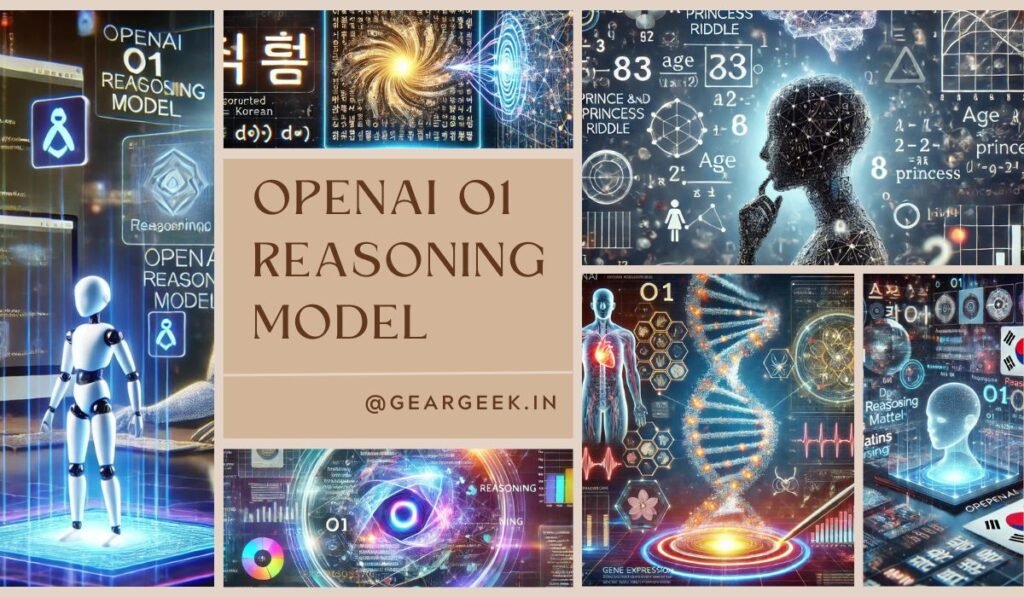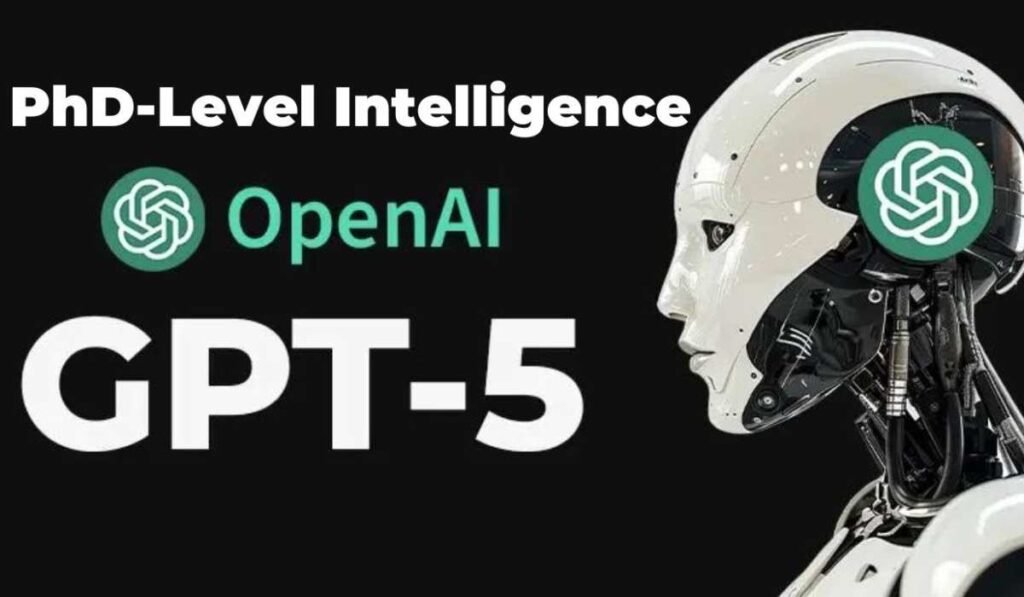OpenAI has unveiled its latest breakthrough—the O1 reasoning model—promising unprecedented capabilities in reasoning, mathematics, programming, and more. In this comprehensive exploration, we delve into how the OpenAI O1 reasoning model is set to revolutionize the AI landscape.
Introduction to the OpenAI O1 Reasoning Model
OpenAI has just released two brand-new models within ChatGPT, and they are poised to redefine the boundaries of artificial intelligence. The OpenAI O1 reasoning model stands out with its exceptional abilities in reasoning and problem-solving, outperforming previous models in mathematics and programming tasks.
But what exactly makes the O1 reasoning model so revolutionary? Unlike its predecessors, this model is designed to think more like a human, employing a deliberate thought process before arriving at an answer. This advancement allows it to tackle complex problems with greater accuracy and reliability.
In this article, we’ll explore the remarkable capabilities of OpenAI’s O1 reasoning model, examining various examples and demonstrations that showcase its potential to transform industries and empower individuals.
Transforming Programming with O1
“Every human is gonna be able to build way more… That’s what gets me really excited.” — Scott Wu, CEO and co-founder of Cognition
Programming has evolved dramatically over the past fifty years, from punch cards to cloud computing. Yet, one constant challenge remains: the complexity of writing consistent, functional code. OpenAI’s O1 reasoning model addresses this by enabling users to create code with unprecedented ease and precision.
Devon: The Autonomous Software Agent
Scott Wu introduces Devon, the first fully autonomous software agent built using the O1 reasoning model. Devon can build tasks from scratch and approach problems like a seasoned software engineer. In one demonstration, Devon is tasked with analyzing the sentiment of a tweet:
- Planning: Devon makes a plan to fetch the tweet data.
- Adaptation: It encounters an issue fetching the data via the browser.
- Problem-Solving: Instead of halting, Devon adapts by accessing the tweet through the API.
- Conclusion: It successfully determines that the predominant emotion of the tweet is happiness.
This example illustrates the O1 reasoning model’s ability to navigate real-world programming challenges, making intelligent decisions and adjusting strategies as needed.
Advancements in Mathematics and Reasoning
Mathematical problems often stump AI models due to their need for precise reasoning. OpenAI’s O1 reasoning model excels in this domain by thinking through problems before answering, thereby reducing errors.
Counting Characters Accurately
An example highlights this improvement:
- Task: Count the number of ‘r’s in the word “strawberry.”
- Previous Models: GPT-4.0 incorrectly states there are two ‘r’s.
- O1 Model: The O1 reasoning model takes a moment to think and correctly identifies that there are three ‘r’s.
This showcases how the model’s reasoning capabilities enable it to handle tasks that require careful analysis, which previous models struggled with due to processing text at the subword level.
Solving Complex Riddles
The O1 reasoning model can tackle intricate puzzles that require setting up and solving equations:
- Riddle: A princess is as old as the prince will be when the princess is twice as old as the prince was when the princess’s age was half the sum of their present age. What are their ages?
- Approach: The model thinks through the problem, defines variables, sets up equations, and solves them.
- Solution: It concludes that the prince is six times ‘k’ years old, and the princess is eight times ‘k’ years old, providing a general solution.
This level of reasoning demonstrates the model’s potential in educational settings and complex problem-solving scenarios.
Real-world Applications in Genetics
“It’s impossible to be an expert in every single gene… but AI can.” — Katherine Brownstein, Geneticist at Boston Children’s Hospital
In the field of genetics, where data is vast and ever-expanding, the OpenAI O1 reasoning model offers invaluable assistance. Katherine Brownstein shares her experience:
- Challenge: Investigating a case involving excruciating bladder pain with unknown causes.
- Solution: By querying the model about citrate synthase, it provides detailed information about its expression in the bladder and potential links to bladder health.
- Insight: The model considers both increased and decreased activity scenarios, offering comprehensive insights.
This accelerates the research process, allowing geneticists to explore hypotheses more efficiently and focus on the most promising avenues.
Deciphering Complex Languages
The O1 reasoning model excels in understanding and translating corrupted or complex language inputs that previous models could not handle.
Decoding Garbled Korean Text
An example demonstrates the model’s linguistic prowess:
- Task: Translate a badly corrupted Korean sentence into English.
- Previous Models: GPT-4.0 fails to process the text, declaring it invalid.
- O1 Model: The O1 reasoning model methodically deciphers the text, recognizing patterns in Korean character construction.
- Outcome: It successfully translates the sentence, acknowledging the encryption method used to confuse AI models.
This ability to reason through linguistic challenges opens new possibilities in language processing and translation services.
Enhancing Creativity and Problem Solving
The OpenAI O1 reasoning model not only excels in technical tasks but also enhances creative endeavors.
Writing Poetry with Constraints
When tasked with writing a poem under specific constraints:
- Assignment: Write a six-line poem about squirrels playing koalas at soccer.
- Constraints: Specific word placements, endings, and syllable counts.
- Previous Models: GPT-4.0 struggles to meet all the constraints.
- O1 Model: The O1 reasoning model thinks through the requirements and produces a poem that satisfies all conditions.
Implementing and Enhancing Games
In another instance, the model is asked to create a simple snake game:
- Initial Task: Provide code for a basic snake game using HTML, JavaScript, and CSS.
- Enhancement: When further instructed to add obstacles in the shape of the letters ‘AI,’ the model adjusts the code accordingly.
- Result: A functional game with customized obstacles, showcasing the model’s adaptability and coding proficiency.
Visualizing Complex Concepts
The model aids in educational tools, such as visualizing self-attention mechanisms in transformers:
- Task: Create a visualization of self-attention using the sentence “The quick brown fox.”
- Process: The model thinks through the requirements, plans the code structure, and ensures it meets all specified conditions.
- Outcome: It produces an interactive visualization that highlights attention scores when hovering over words.
This facilitates a deeper understanding of complex AI concepts, making them more accessible to learners.
The Future of AI with OpenAI’s O1
OpenAI’s release of the O1 reasoning model marks a significant milestone in artificial intelligence. By incorporating reasoning abilities akin to human thought processes, the model opens doors to advancements across various fields.
Key Features of the O1 Reasoning Model
- Deliberate Thinking: The model takes time to think before answering, leading to more accurate and reliable responses.
- Error Checking: It can review its own outputs, reducing mistakes in tasks like coding and mathematical problem-solving.
- Adaptability: The model adjusts to new instructions and challenges, making it versatile across different applications.
- Human-like Reasoning: It questions its own reasoning and can reflect on its thought process, leading to better outcomes.
Impact on Industries
- Programming: Simplifies code generation and debugging, enabling more people to build software efficiently.
- Education: Assists in solving complex problems, aiding both teachers and students in subjects like mathematics and physics.
- Healthcare: Accelerates research in genetics and medicine by providing detailed analyses of vast data.
- Linguistics: Enhances translation services and language understanding, even with corrupted or complex inputs.
- Creative Arts: Assists in writing, game development, and other creative tasks by meeting intricate requirements.
OpenAI’s O1 reasoning model is more than just an upgrade—it’s a transformation in how AI can assist and augment human capabilities. By bridging the gap between machine computation and human-like reasoning, it sets a new standard for what artificial intelligence can achieve.
As we continue to explore the possibilities, one thing is clear: the OpenAI O1 reasoning model is a game-changer, poised to unlock new potentials and reshape the future of AI.
The OpenAI O1 reasoning model is a new AI model that excels in reasoning, mathematics, programming, and more, designed to think more like a human by employing a deliberate thought process before arriving at answers.
The O1 reasoning model simplifies code generation and debugging, allowing users to create functional code with unprecedented ease and precision, as illustrated by the autonomous software agent Devon.
Yes, the O1 reasoning model excels in mathematics by carefully reasoning through problems before answering, which reduces errors and improves accuracy in tasks such as counting characters and solving intricate riddles.
In genetics, the O1 reasoning model aids researchers by providing detailed analyses of genetic data, helping them explore hypotheses more efficiently, as demonstrated in a case involving bladder pain.
The O1 reasoning model can decode and translate corrupted or complex language inputs that previous models could not process, showcasing its advanced linguistic capabilities.
The O1 reasoning model enhances creativity by assisting in tasks such as writing poetry under specific constraints and developing games with customized features.
Key features include deliberate thinking, error checking, adaptability, and human-like reasoning that allows the model to reflect on its own thought processes.
The O1 reasoning model assists in education by aiding teachers and students in solving complex problems in subjects like mathematics and physics, promoting a deeper understanding of challenging concepts.
The O1 reasoning model is expected to unlock new potentials in various fields, including programming, healthcare, linguistics, and creative arts, ultimately reshaping the future of AI.
The O1 reasoning model represents a significant advancement in AI by bridging the gap between machine computation and human-like reasoning, setting a new standard for what artificial intelligence can achieve.





